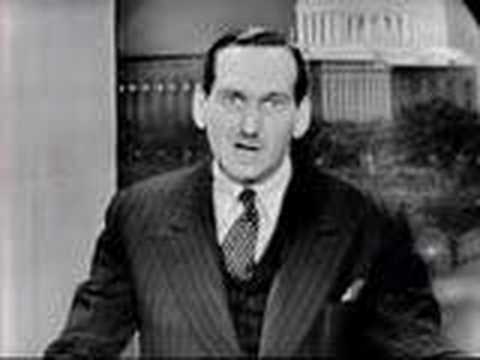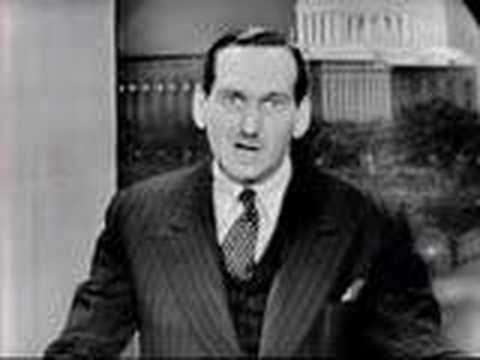

SPECIAL 3 DAY BIRTH OF COLOR EVENT: DAY 2, PART 4
SPECIAL 3 DAY BIRTH OF COLOR EVENT: DAY 2, PART 4
Today is the 63rd anniversary of commercial color broadcasting in America. Over the weekend, Eyes Of A Generation will continue to tell the most complete story of the development of RCA’s Compatible Color System, ever presented on the internet. Pass the word! More below the line. -Bobby Ellerbee
_____________________________________________________
December 17, 1953…FCC Approves RCA Color, A First Hand Account
It was a Thursday afternoon when the FCC approved the RCA Dot Sequential color system as the national standard. Our friend and former NBC engineer Frank Merklein was actually the one that broke the news to David Sarnoff. Below is part of an email from Frank to me with his first hand observations.
“General Sarnoff was the force behind defeating the CBS mechanical wheel and in forming the NTSC (National Television Standards Committee) color committee of all the US manufacturers.”
“NBC had been doing daily closed circuit color test shows (the same show every day for 2 1/2 years) from 3H and the Colonial Theater. I was part of that testing and Sarnoff had made me a member of one of the committees”
“When the FCC chose the RCA system, the General was in our control room in Studio 3H. I was on the phone with the FCC…I turned to the General and gave him a prepared message. “General Sarnoff, the FCC informs you that they have unanimously approved of the NTSC system for color.” He grinned, blew smoke from those over-sized cigars he inhaled and thanked everyone! Great memory.”
Later that day, at 5:31:17, NBC became the first to broadcast in the newly approved color system with a color slide of the NBC Chimes.
At 6:30 that evening, NBC aired a special half hour color show with David Sarnoff, Pat Weaver and Jimmy Durnate.
The next day RCA had full page ads in several major newspapers, some of which can be seen in this video of the announcement that ran on Saturday night, right in the middle of NBC’s biggest show, “Your Show Of Shows”.
The pace at RCA, NBC and AT&T was fast and furious, because just 14 days after the announcement came this….
The First Rose Parade Color Cast…NBC, January 1, 1954
This was the first ever national west coast – to east coast colorcast using the newly approved National Television System Committee (NTSC) standards.
AT&T Long Lines had hurriedly configured a color capable network of 21 television stations across the United States. RCA Broadcast had rushed transmitter modification equipment to the affiliates on the Bell color network path.
RCA had also built a small pre-production run of 200 color receivers. This set was designated as the “Model 5”, the fifth in their series of experimental color sets. The Model 5 was provided to NBC affiliates and RCA Victor distributors for the Rose Parade and each location had a full house for the event.
The “Model 5” was the prototype for the first RCA production Color Receiver…the Model CT-100. Starting March 25, 1954, 5,000 CT-100’s were manufactured in RCA’s Bloomington, Indiana plant. The set was named, “The Merrill”.
Below is the story The New York Times wrote about the color cast a few days later….
“Color television’s most exacting test came with the National Broadcasting Company’s outdoor pickup of the Tournament of Roses Parade in Pasadena California. The New Years Day Program was the first prolonged presentation of color video under circumstances where, unlike a studio show, neither lighting, nor movement could be controlled. All things considered, the results were exceedingly good.
The Tournament of Roses parade had the largest audience thus far, probably several thousand persons to see color TV at one time. The American Telephone and Telegraph Company, in a amazingly speedy engineering accomplishment, put together a color network of twenty-two cities to which the Radio Corporation of America had rushed equipment. A number of other set manufacturers also held demonstrations of color receivers in different cities.
With so many sets in operation, each subject to relatively critical tuning controls and possible vagaries of electronics, the quality of the tinted images from Pasadena undoubtedly varied on some receivers. But, overall, there is no question that the essence of the parades panorama of color was projected successfully on home screens some 3000 miles away. In comparison the monochrome pictures seen on existing receivers seemed virtually meaningless.
As the two NBC color cameras scanned a succession of elaborate floats, assorted military units, and other parade features, the scene was a veritable bevy of hues and depth; at other times the close-up was better. Occasionally there were overcasts of one tint or another but these disappeared with movement of the camera.
To concentrate so much color information within the frame of a small screen would be difficult for even the most gifted artist doing a “still” painting. To do it with constantly moving pictures seemed pure wizardry. Especially interesting from a technical standpoint was the remarkable stability of the individual colors as the NBC camera moved quickly from left to right and back again. On one set at least there was no perceptible streaking.
The Tournament of Roses parade, received locally from 12:15 to 1:45 P.M., did emphasize several problems for the home viewer. In the broad daylight and sunshine, it was necessary to draw the shades and cut out all glare if the colors on the TV screen were not to be washed out. This frankly, was a nuisance.
Another difficulty related to the size of the picture. The disadvantage of a small color image – roughly 12 1/2 inches – was much more noticeable with the parade than with earlier studio programs. And, since it is necessary to sit much farther away than from a black and white set, one wonders how big a color tube will be practical. Finding a happy compromise between picture size and viewing distance could be tricky for the engineer and the viewer, particularly if the latter must start rearranging furniture again.” -Bobby Ellerbee